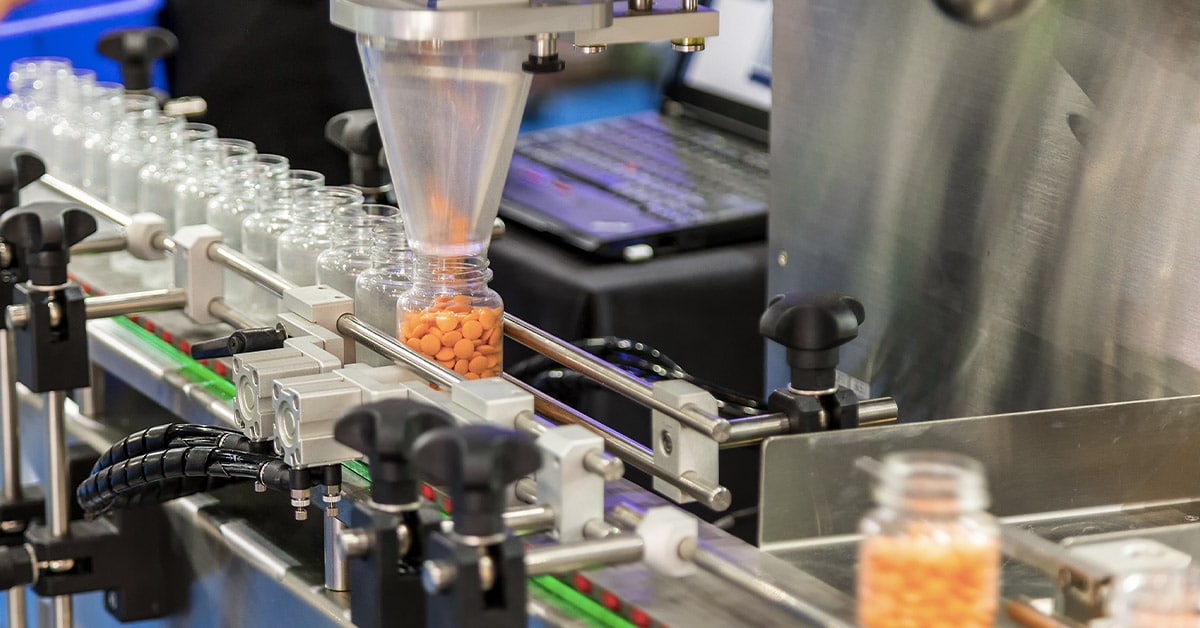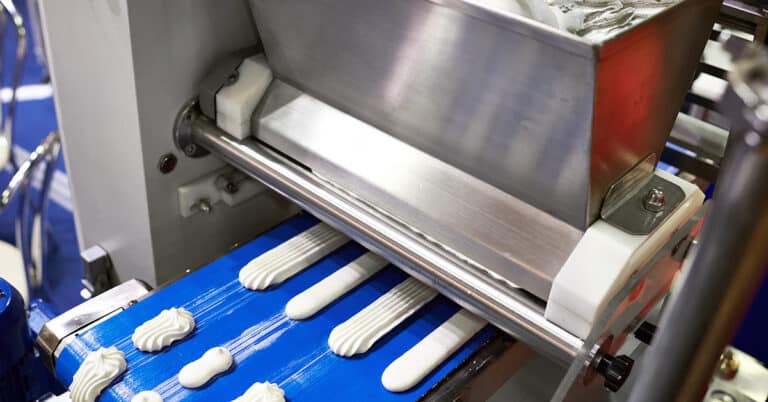A business that doesn’t keep improving will soon be eclipsed by its competitors. The only way to succeed is to keep looking for ways to do things better, which is what fuels the drive for optimization of manufacturing processes.
Optimizing a manufacturing process is like fine-tuning a race car. It means searching for every opportunity to make it run better. The goal is to get more out for what is put in, or in other words, to increase its efficiency.
This blog dives into the subject of manufacturing optimization. It covers how process optimization is part of production optimization and discusses why it should be done. Probably of greatest interest to readers, though, it offers some suggestions for how to improve a manufacturing process.
What is process optimization?
Every manufacturing process — weaving, cutting, coating, filling, joining or others — adds value to the incoming material. Inputs needed to do this include raw material, most of which will be converted or otherwise moved closer to its finished state, energy, labor, component materials and other consumables such as tooling.
The more output achieved for a unit of input, the more efficient the process. Process optimization is about squeezing as much output as possible from an individual operation or process. This is done partly because higher efficiency means lower unit costs, but also because it can help the entire production operation work more efficiently.
Another way of looking at this is to say that process optimization is about finding and eliminating sources of waste.
Process optimization vs. production optimization
A production operation, be it a plant, a line or a cell, is composed of a series of process steps. Process optimization is concerned with improving the efficiency of each of the steps (or reducing waste at each step).
Production optimization is a system-level look at efficiency. It looks at the output being achieved by a production operation in relation to the level of resource inputs.
Industrial engineers try to balance each step in a production process so work will flow at a constant rate. It’s almost inevitable though that there will be a bottleneck process within the series of steps needed to make the product. Optimizing this bottleneck process so more can flow through increases output from the whole production operation and lets it run more efficiently. Production is optimized by optimizing the bottleneck process.
Importance of process optimization
Increasing efficiency (or reducing waste) is important at every step in a sequence of manufacturing operations. Preventing scrap improves utilization of material and machines. Reducing cycle time raises capacity and may save energy.
These improvements all help a business lower cost and build a stronger competitive position. Yet when process optimization is applied at the bottleneck, the benefits are magnified by the increase in capacity of the entire system.
Benefits of process optimization
Taking the time to optimize an individual process reduces the waste created at that point in the operation.
This waste could be:
- Material scrapped during setup
- Parts scrapped due to excessive variation in the process
- Nonproductive time caused by an operator searching for hand tools
- Nonproductive time caused by needing to move material
- Waiting for supplies to arrive
- Lost production caused by a breakdown
- Material storage and transport
A process optimization exercise involves first identifying these losses or wastes, and then making improvements to reduce their magnitude (and ideally, eliminate).
How to improve your manufacturing process
Process optimization in manufacturing is achieved by following a disciplined series of steps. DMAIC (Define, Measure, Analyze, Improve, Control) provides a framework to guide the effort.
Select a target (define)
A good approach is to look at OEE data from individual lines or cells. Alternatively, choose a line with a known problem such as routinely needing overtime working to hit production targets.
Gather data (measure)
Data is essential to determine efficiency or waste within the target area. The OEE metric provides a start point, but it’s helpful to go deeper by looking at factors such as labor, material, machine and even energy utilization.
Identify improvement opportunities (analyze)
Start by finding the bottleneck, then zoom in to discover the causes of inefficiency or lost output at this process step. Several industrial technologies are available for capturing data about what happens at the bottleneck throughout the course of a shift or day. For instance, current monitoring can show when a machine is in-cycle and when it’s idle.
Once data has been gathered and analyzed, present it in a Pareto format to highlight priority issues to address.
Implement improvements (implement)
Inefficiency and waste can have many causes, from long setup times to excessive process variation and poor workplace organization. In many cases, significant improvements can be made by addressing the causes of downtime.
Downtime can be planned or unplanned. Planned downtime is time used for preventive maintenance. This includes tasks such as changing oil and filters, cleaning sensors, and checking belt tightness. Unplanned downtime occurs when a machine breaks down. Both result in lost output, but unplanned downtime is more disruptive in terms of impacts elsewhere in production.
Downtime can be addressed by moving to a predictive maintenance strategy. This is where equipment is instrumented with sensors that report on aspects of its performance, operation or condition. Vibration monitors and oil quality monitors are two examples of the types of condition monitoring technology available.
Review and maintain the improvements (control)
Improvements need to stick, which may mean changing Standard Operating Procedures (SOPs), and auditing to ensure the new methods or sequences are being followed. This is the last element of the DMAIC framework.
Integrate maintenance with process optimization in manufacturing
Process optimization is an essential continuous improvement activity. It finds and eliminates waste while supporting production optimization across the whole manufacturing operation.
A big part of this is to address downtime, which is done by looking at and refining the maintenance strategies used.
In many cases, adopting condition monitoring technology enables a move to predictive maintenance. This is where work is done only when needed, which reduces planned and unplanned downtime.
ATS is the pioneer in outsourced industrial maintenance and leads the field today. Contact us to learn how we can support your process optimization efforts.






